Doubao Input Method 1.0 Review: Its Cleanliness Shines, While Functionality Falls Short
![]() 11/25 2025
11/25 2025
![]() 555
555
It has distinct strengths and weaknesses.
Doubao has emerged as the AI application that Xiao Lei relies on most in his daily routine. Whether it's tackling tough questions, summarizing group interview documents, or refining text content, Xiao Lei can confidently turn to it for assistance.
Recently, Xiao Lei stumbled upon an app named Doubao Input Method in his phone's app store. Initially, he suspected it was a hastily crafted app by some developer trying to ride the wave of popularity. However, upon closer inspection, he confirmed that it was indeed an official product from Doubao's development team.

(Image source: Leitech Graphics)
As a devoted Doubao user, Xiao Lei promptly downloaded and gave it a try. Without further ado, let's delve into the experience. (Based on version 1.0.0)
A Simple and Clean Interface, Though Slightly Basic
It's immediately noticeable that the layout of Doubao Input Method bears a resemblance to mainstream input methods on the market, and its overall UI design closely mirrors that of the native Android keyboard. This is understandable, as input methods have evolved over time to establish a mature interaction model that caters to most users. Doubao Input Method's design, which follows this trend, is actually a wise move.
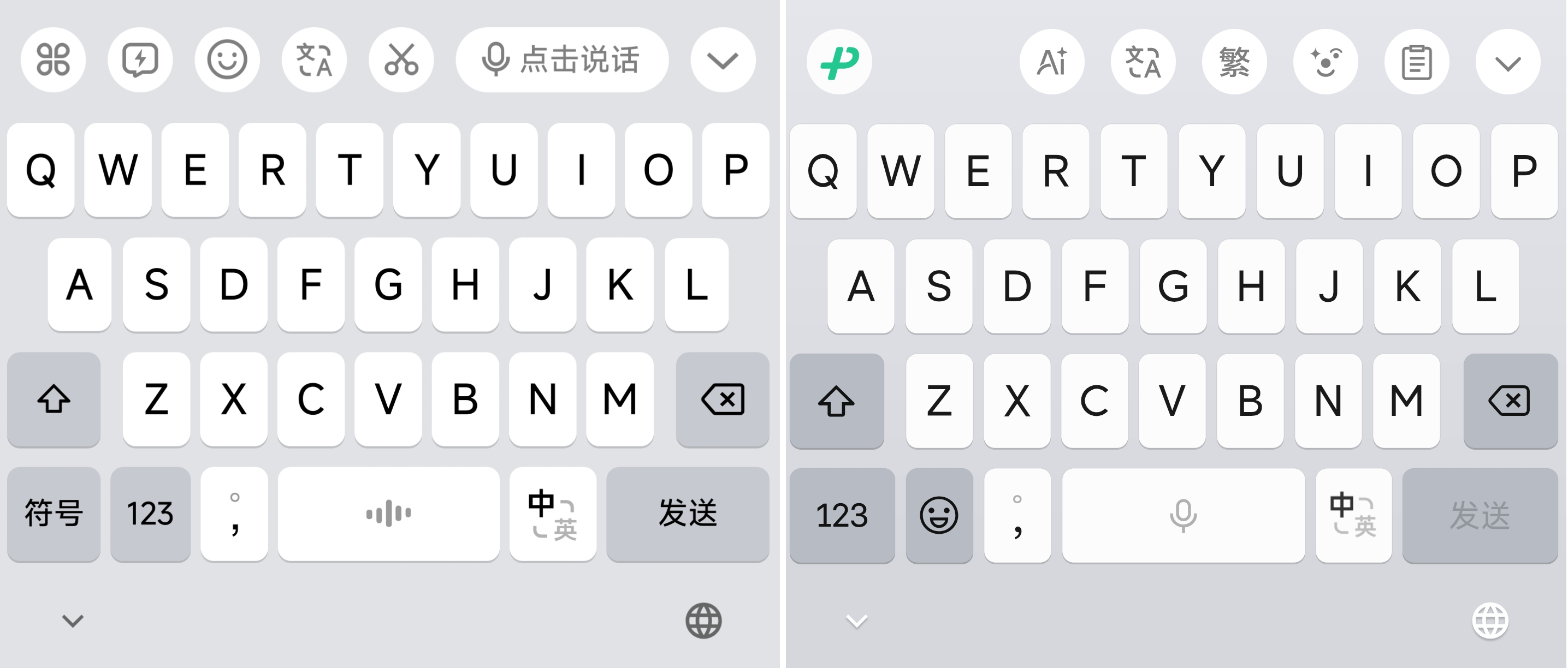
(Image source: Leitech Graphics. Left: Doubao Input Method. Right: A mainstream input method.)
However, this 'borrowed' approach also makes it less unique. Sometimes, users may inadvertently tap the switch function in the bottom right corner of the screen and not even realize which input method they're using.

(Image source: Leitech Graphics)
In the settings interface of the input method, compared to mainstream counterparts, Doubao Input Method's layout and settings categorization are remarkably concise and efficient. Almost all functions are neatly placed in the primary menu, making it easy for users to quickly locate the features they wish to modify. Additionally, there are currently no windows for ads, skins, memberships, or account logins, which is commendable for its simplicity and ease of use.
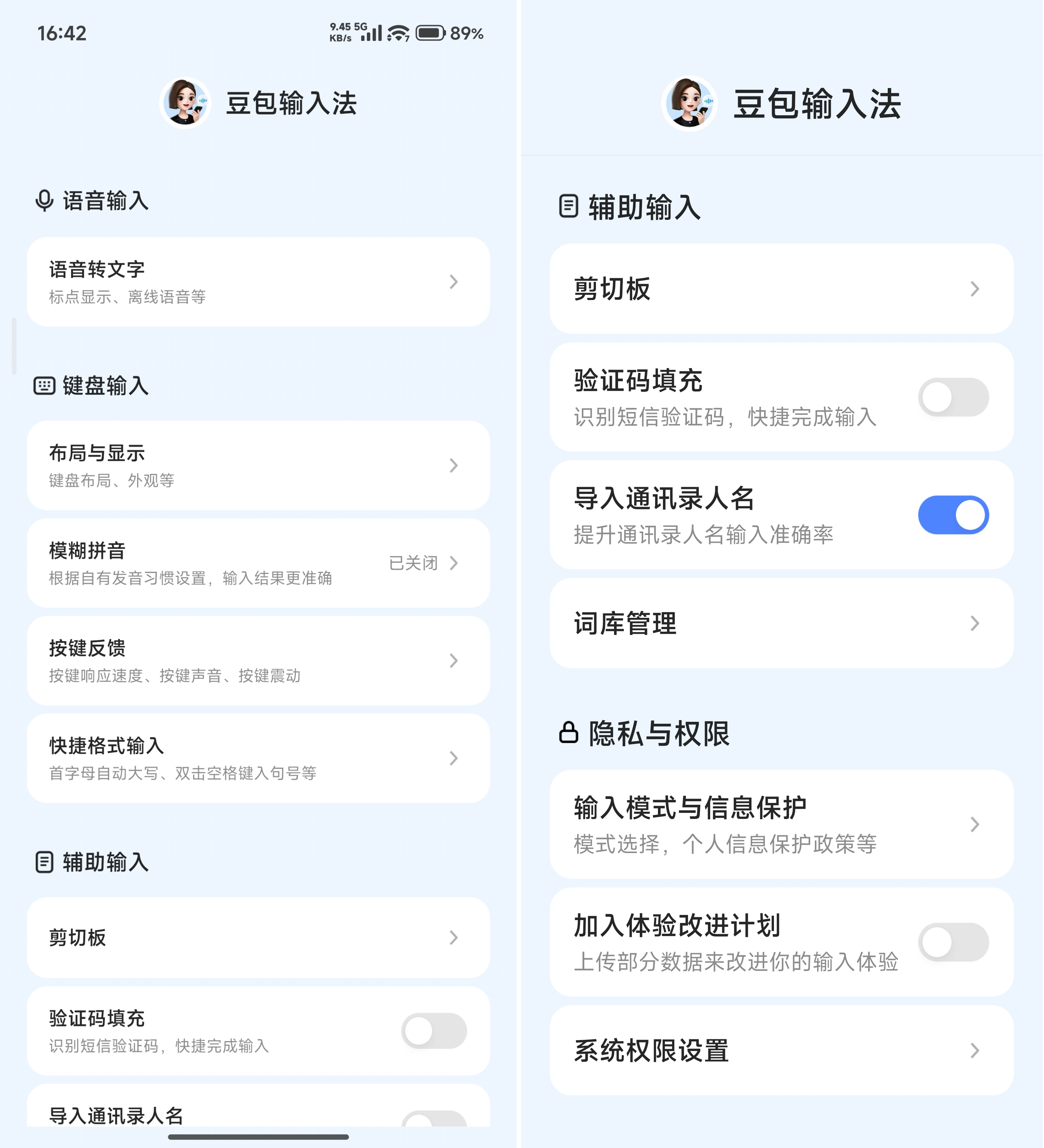
(Image source: Leitech Graphics)
In terms of functionality, Doubao Input Method currently offers only five major features: 'Emojis,' 'Common Phrases,' 'Clipboard,' 'Translation,' and 'Voice Input.' Compared to mainstream input methods, it falls significantly short.
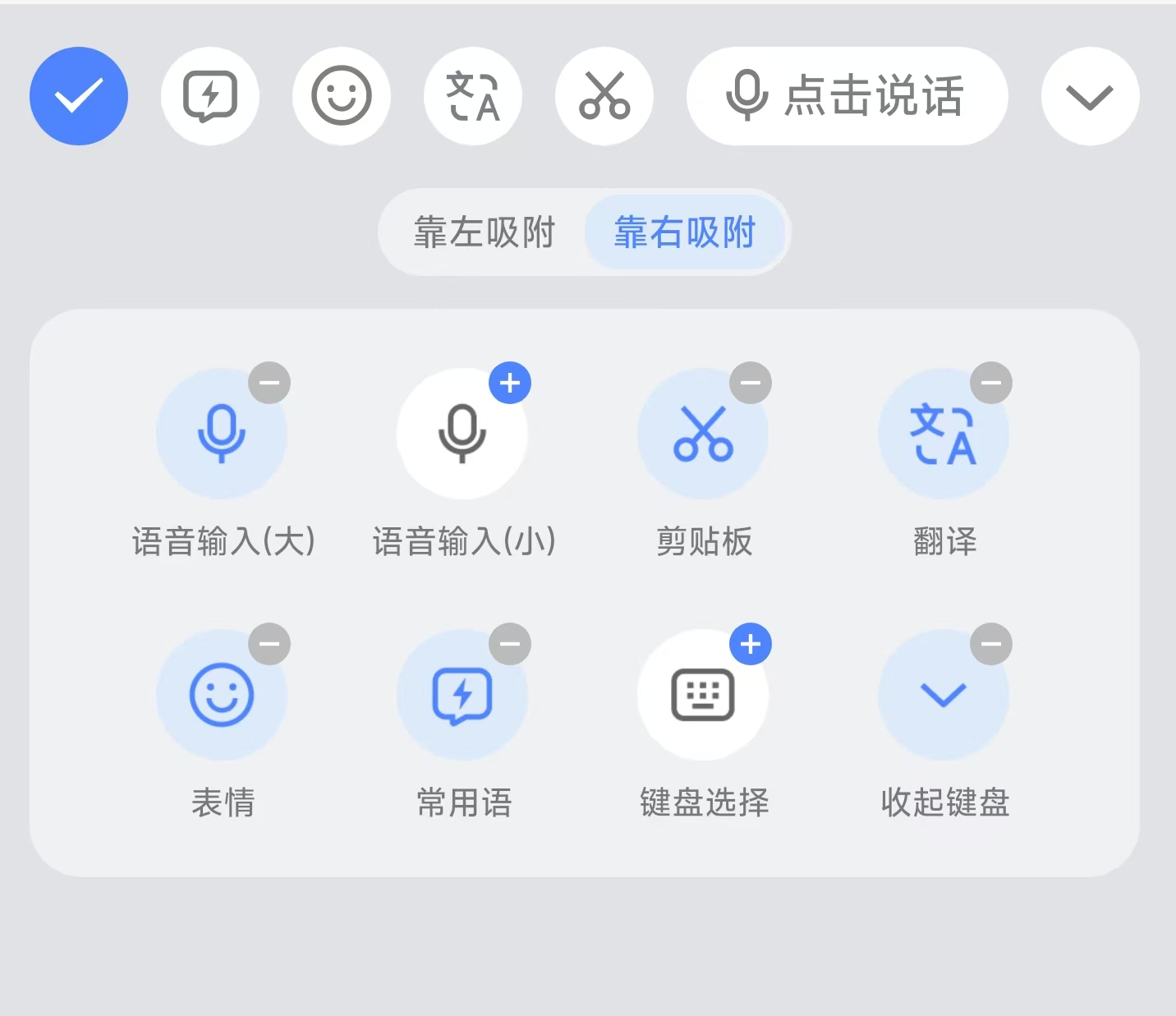
(Image source: Leitech Graphics)
We must acknowledge that, as the first version, Doubao Input Method can only be described as 'barebones' in terms of functionality. It lacks mainstream AI search features and supports only two input formats: nine-grid and full-keyboard Pinyin. Features like Wubi, handwriting, stroke input, and dual-Pinyin keyboards are notably absent.
Taking the translation feature, which Xiao Lei frequently uses, as an example, Doubao Input Method's translation speed and accuracy are impeccable. However, it currently supports only Chinese and English. For mainstream languages like Spanish, Japanese, and Korean, users still need to rely on their phone's voice assistant.
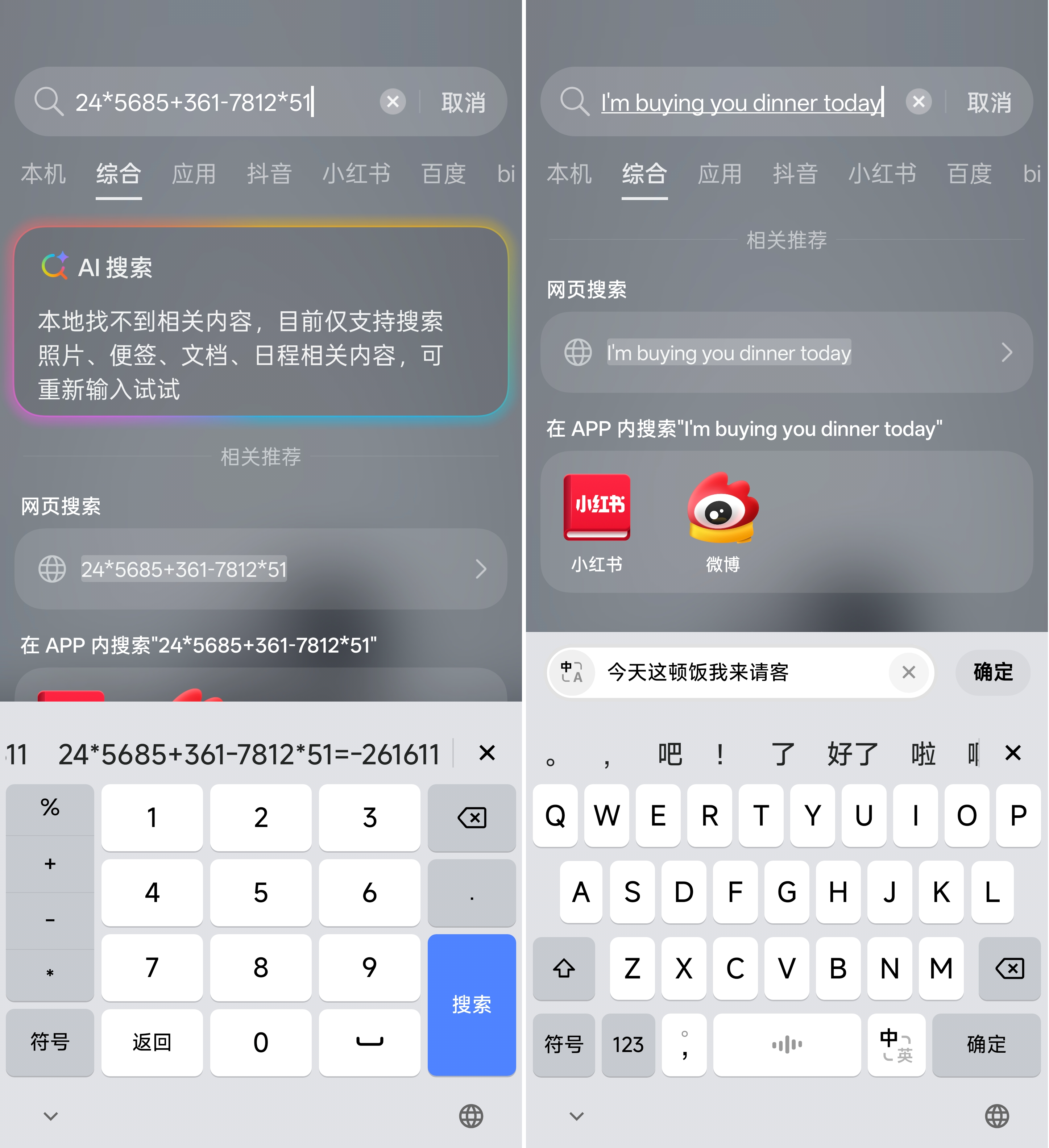
(Image source: Leitech Graphics)
However, small features like automatic verification code input, automatic arithmetic calculations, and importing contacts are all included in Doubao Input Method.
Unfortunately, the AI features that mainstream input methods are promoting are entirely absent in the first version of Doubao Input Method.
Additionally, Doubao Input Method currently suffers from a significant issue: input lag. During a day of use, Xiao Lei experienced multiple instances where 'his fingers had already pressed several letters, but the keyboard seemed to freeze for a second before responding,' severely impacting the user experience.
To ensure that it wasn't a phone system issue, Xiao Lei installed and tested it on OPPO and Xiaomi phones. Unfortunately, the problem persisted. Hopefully, the Doubao team can address this issue soon. Even if the functionality is streamlined, if the basic input smoothness cannot be guaranteed, it will be challenging for it to become the primary input method for users.
Voice Input: The Biggest Advantage, a Boon for Elderly Users?
After discussing the drawbacks, let's shift our focus to the advantages.
Whether from the app's icon or the 'prominent' microphone icon on the keyboard layout, it's evident that Doubao Input Method currently emphasizes voice-to-text conversion. Xiao Lei wasn't particularly interested in this feature before. On one hand, using voice input in public can be somewhat awkward. On the other hand, previous input methods he tried had low accuracy rates, often requiring significant post-editing, making the actual efficiency even lower than typing.
However, with technological advancements, even WeChat has added a separate voice-to-text feature. Perhaps the recognition and accuracy rates have indeed improved significantly at this stage.
So, how does Doubao Input Method's voice-to-text feature perform?
Let's first examine the official description. The app store's update announcement states that Doubao Input Method supports multiple dialects, English, and mixed Chinese-English input, as well as whispering and two voice input modes. Although Doubao hasn't specified which voice recognition technology it uses, Leitech surmises that it likely employs the same Seed-ASR voice recognition model as Doubao.
Therefore, let's first test Doubao Input Method's dialect recognition accuracy. Xiao Lei tested Mandarin, English, and Sichuanese, and the recognition speed was very fast, with an accuracy rate of 100%. This performance didn't surprise Xiao Lei much. If it couldn't accurately recognize basic languages, Doubao Input Method would lose its core competitiveness.

(Image source: Leitech Graphics)
Additionally, Xiao Lei tested Hakka and Teochew dialects, but it seems that Doubao Input Method's language recognition library doesn't include these minority languages, which is somewhat disappointing.
Since Doubao Input Method claims to support mixed Chinese-English input, Xiao Lei naturally tested it. The recognition of Cantonese mixed with English was also excellent. Although the recognition speed was slightly slower (about a second) compared to the previous languages, the accuracy remained high.
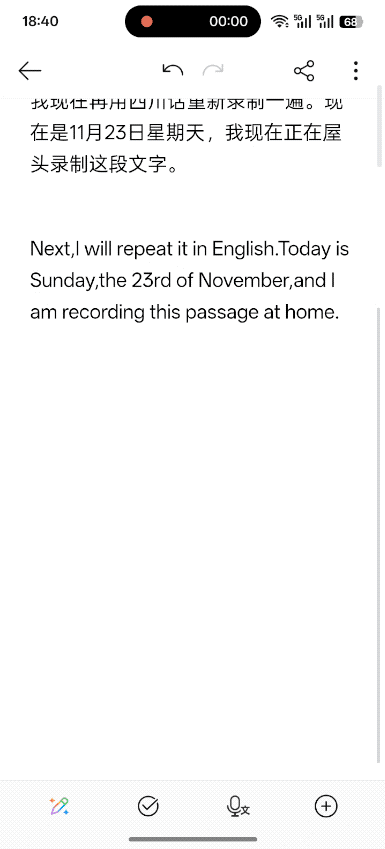
(Image source: Leitech Graphics)
Finally, we tested the most challenging scenario: multiple speakers. This simulates outdoor usage scenarios for users. In practice, Doubao Input Method prioritizes recognizing Xiao Lei's voice. When Xiao Lei stops speaking, it immediately recognizes surrounding voices. However, when Doubao detects that the nearby voice input lacks a complete theme, it automatically deletes the text.
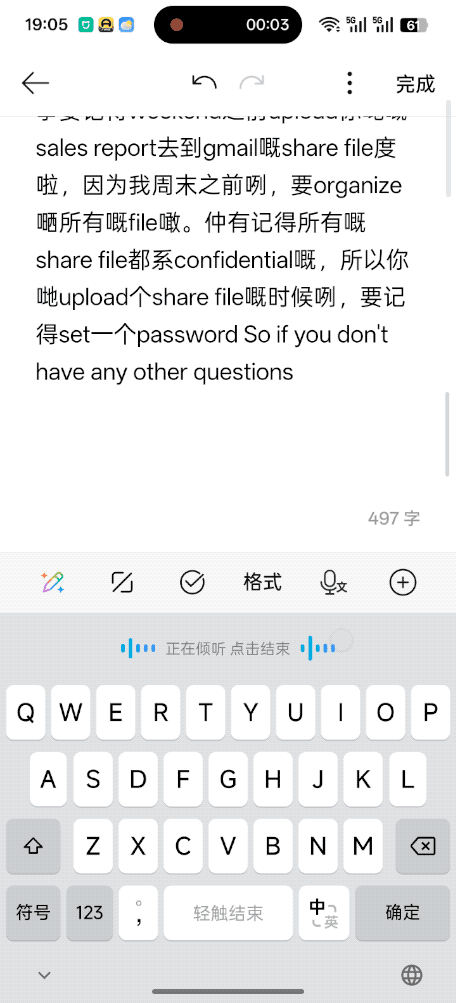
(Image source: Leitech Graphics)
In simple terms, Doubao Input Method strives to prioritize recognizing the user's own voice. This performance far exceeded Xiao Lei's expectations.
However, considering privacy concerns that some users may have, Doubao Input Method offers two options. First, users can download an intelligent offline model in advance, allowing Doubao Input Method to perform accurate voice recognition without an internet connection. Second, users can switch to the basic input mode, completely disconnecting Doubao Input Method from the internet, thus preventing it from collecting personal data. However, it's important to note that in basic mode, the two core features—voice-to-text conversion and translation—will be disabled, which seems somewhat counterproductive.

(Image source: Leitech Graphics)
Just when Xiao Lei thought these were all the advantages of Doubao Input Method, he suddenly discovered that its contextual association was also outstanding.
For example, the input method Xiao Lei usually uses can only predict what kind of emoji or punctuation mark should accompany the text.

(Image source: Leitech Graphics)
On the other hand, Doubao Input Method seems to anticipate what Xiao Lei wants to say next. After enabling this feature, Doubao Input Method displays potential subsequent phrases one by one in the candidate bar based on the user's first sentence.

(Image source: Leitech Graphics)
In other words, as long as we keep clicking on the associated words, it can generate a coherent and contextually relevant paragraph.
Its Cleanliness Shines, While Functionality Falls Short
After a day of use, Xiao Lei has a good grasp of Doubao Input Method. Its most appealing aspect is its cleanliness—no annoying ad pop-ups, and all settings are clearly displayed. Unlike some input methods that hide a bunch of flashy features, it's particularly reassuring for those who prefer simplicity.
However, its drawbacks are equally prominent: limited functionality, single input format support, and input lag issues that hinder its potential to become a primary input method. Not to mention the conflicting design between privacy mode and core features, which also needs optimization.
Its greatest potential lies in its deep integration with the Doubao ecosystem. Imagine a future where, when typing unfamiliar phrases in Doubao Input Method, we don't need to take any additional actions; the input method can directly call Doubao's AI search to provide a brief explanation. When editing long texts, we can trigger Doubao's text refinement and summarization features with a single tap. Even in chat boxes, we can quickly call Doubao to generate meeting minutes or travel guides through the input method.
If Doubao Input Method can truly implement these features, it will become one of the few input methods on the market that achieves 'input-as-a-service.' Not only will it shed its 'half-baked' label, but it will also carve out a unique niche in the input method market, becoming a key entry point to the Doubao ecosystem.
For long-time Doubao users like Xiao Lei, such ecological integration will also make AI services more seamless and easier to use.
Doubao Input Method, voice input, AI input method, ByteDance
Source: Leitech
Images in this article are from the 123RF Licensed Image Library.








